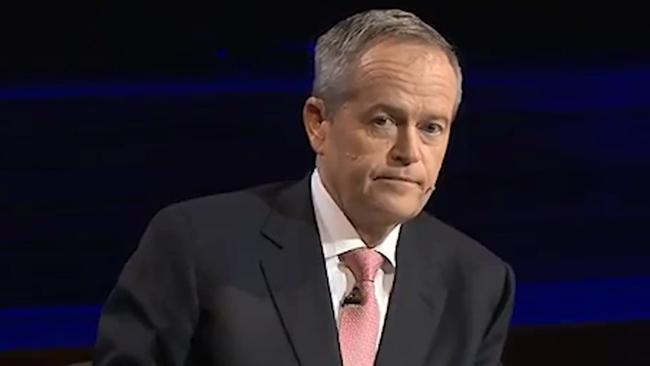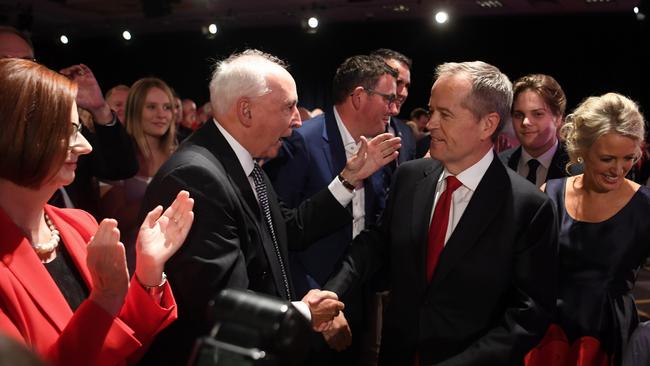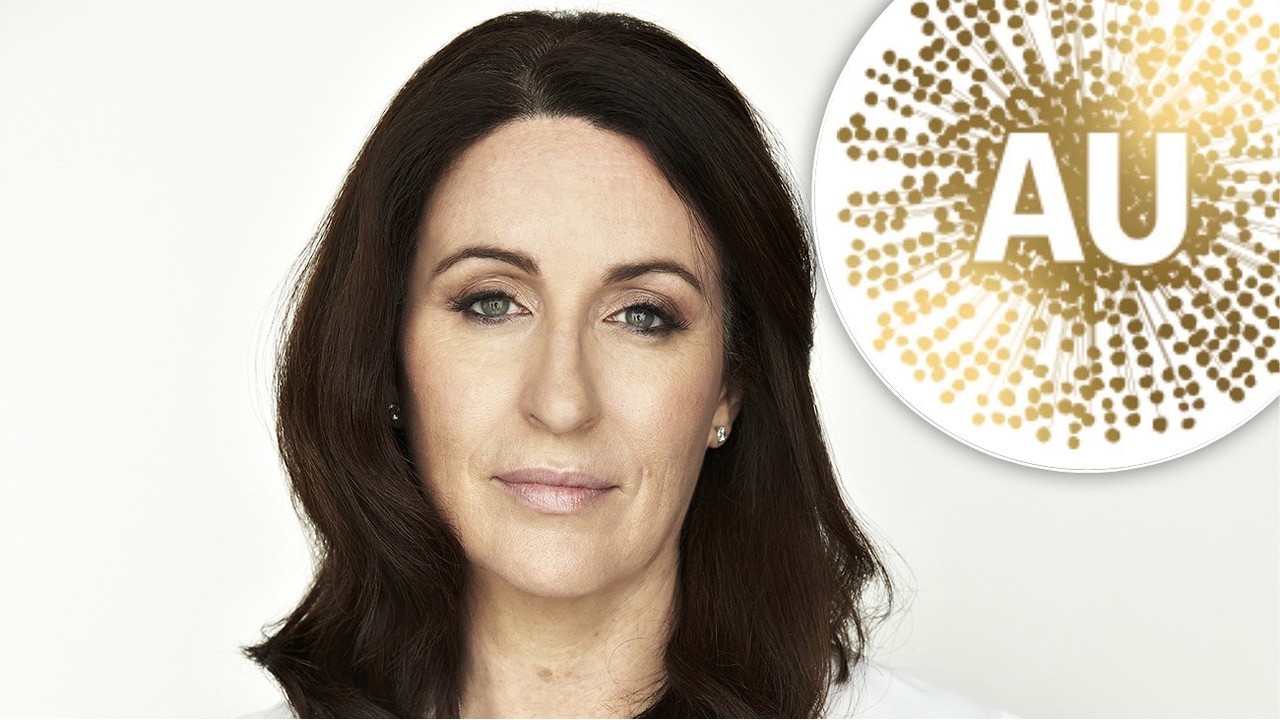What Shorten still hasn’t realised about voters
He may be acting as if he already has the job of Prime Minister, but it seems Bill Shorten has ignored one crucial point in his attempt to win over Australians, and it’s sure to cost him dearly, writes Miranda Devine.
In between fobbing off questions as “dumb” and disparaging at least 40 per cent of Australians who aren’t climate zealots as “knuckle draggers and cave dwellers”, Bill Shorten did a great job on Q&A on Monday night — if you like that kind of thing.
It’s just not very prime ministerial.
Nor are insults a recipe for attracting voters, as Hillary Clinton found to her detriment in the 2016 US presidential election after she wrote off Trump backers as “deplorables”.
Repeatedly asked by Q&A audience members how much his policies would cost, Shorten just brazened it out.
MORE FROM MIRANDA DEVINE: Meet the wannabe PM — Bill ‘Inauthentic’ Shorten

Finally, even host Tony Jones could stand it no longer. He asked the opposition leader what would be the cost of his climate policies, which include doubling the emissions reduction target agreed to under the Paris accord to 45 per cent. Such a radical remaking of energy policy obviously is not cost-free, but for some reason Shorten doesn’t think he’s obliged to come clean with the voters.
“That is such a dumb question, to say, ‘what does it cost?’ without looking at the cost of inaction”, retorted Shorten. “You can’t have a debate about climate change without talking about the cost of inaction.”
Then he realised that dissing the host was not a smart move and quickly backtracked: “It’s not that you are (dumb), Tony, it’s the question. You know, the Libs just say, ‘Look at the cost of it’.”
I mean, honestly, how dare anyone try to hold Shorten accountable for the cost of his promises. What an outrage.
In the absence of Labor costings, economist Brian Fisher last week published BAEconomic modelling of Labor’s 45 per cent emissions reduction target, finding it would wipe out $542 billion from the economy by 2030 and cost up to 333,000 jobs.
As a result, Fisher’s house was egged, a favourite tactic of left-wing activists, when they’re not delivering faeces in hollowed-out books, as they did to Tony Abbott.
Shorten scoffed at Fisher’s costings, slanderously likening him to doctors hired by tobacco companies in the 1970s to defend smoking.
Shorten says it is “impossible” to cost his climate policy because the cost of “inaction” is greater. Go figure.

He doesn’t get held accountable for his campaign’s biggest furphy, either.
It’s a line he’s repeated from shipyards in Fremantle to pep rallies in Melbourne, and he repeated it again on Q&A on Monday night: that corporate profits have gone up by 39 per cent while wages have only gone up by 5 or 6 per cent.
“We’ve got a problem right now in Australia,” Shorten said in answer to Q&A audience member George Korfiatis, who wanted to know if Shorten had considered the cost of George selling his investment property once Labor abolished negative gearing, spending the proceeds, and then relying on the age pension in retirement.
MORE FROM MIRANDA DEVINE: ScoMo’s not letting Shorten skate his way to PM
Shorten didn’t have an answer for that uncomfortable truth about his housing policy. So he segued into his favourite talking point.
“The economy has flatlined under the current government. Wages … have been growing at the lowest level in 60 years. Now, corporate profits in the last three years are up 39 per cent, but wages have only moved 5 per cent or 6 per cent.”
He’s been less specific about the time frame elsewhere.

Last week at the CivMec shipbuilding yard in Fremantle, he told 500 assembled workers: “This election … is a referendum about the cost of living and a referendum on wages. Corporate profits have gone up 39 per cent, wages have gone up five or six per cent”.
On March 12 in Canberra he said: “Is it fair in this country that corporate profits under the Liberals can go up north of 40 per cent and wages go up by 8 per cent. That’s not the deal. Everyone should share in the benefits of creating wealth in this country.”
Last week on the ABC’s 730 program he said: “Corporate profits are up 39 per cent but wages are only up 5 per cent … What we have is that capital in this country is taxed very lightly, but income is taxed very heavily. It’s not fair on our young people, it’s not fair on our pensioners. It’s not fair on people on fixed incomes.”
MORE FROM MIRANDA DEVINE: Forget Voldemort, it’s vision that Morrison needs
This supposed contrast between sky-high corporate profit growth and low wages growth is central to Shorten’s campaign pitch and the justification for his $397 billion redistribution from the supposed wealthy in extra taxes.
But the problem is, it’s simply not true, as Graham Young from the Australian Institute for Progress will point out in a new paper to be published this week.
Never has there ever been a 39 per cent increase in corporate profits while wages have increased “5 or 6 per cent”.

Young finds there has been “very little change in the ratios between profits and wages in the last 10 years, with employees enjoying a better share of income now than they did in 2011 when Bill Shorten was Minister for Workplace Relations.”
As Michael Stutchbury, editor in chief of the Australian Financial Review, has also pointed out, the wage share of the economy was unusually high in the 1970s, the last time Bill Shorten’s brand of redistributive economics was in favour.
The result back then of a union-driven wages blowout was inflation without growth, or stagflation, followed by the recession of the early 1980s.
MORE FROM MIRANDA DEVINE: Finally, Morrison has a chance to earn his crown
It was the Hawke government which fixed the problem, doing the exact opposite of what Shorten advocates, as Young points out, by bringing in the Prices and Incomes Accord which restrained wages in return for superannuation contributions by employers “and an expectation of higher economic growth as a result of higher levels of investment and business activity”.
When Shorten says he feels our pain over cost of living increases, it’s tempting to believe him.
But when he invited Kevin Rudd and Julia Gillard to sit in the front row of his campaign launch in Brisbane on Sunday, he reminded us what that really means.
The recent failure of Michael Daley to win the NSW election shows Australians aren’t so stupid as to fall again for a Labor grab-bag of uncosted promises and flim flam rhetoric.


